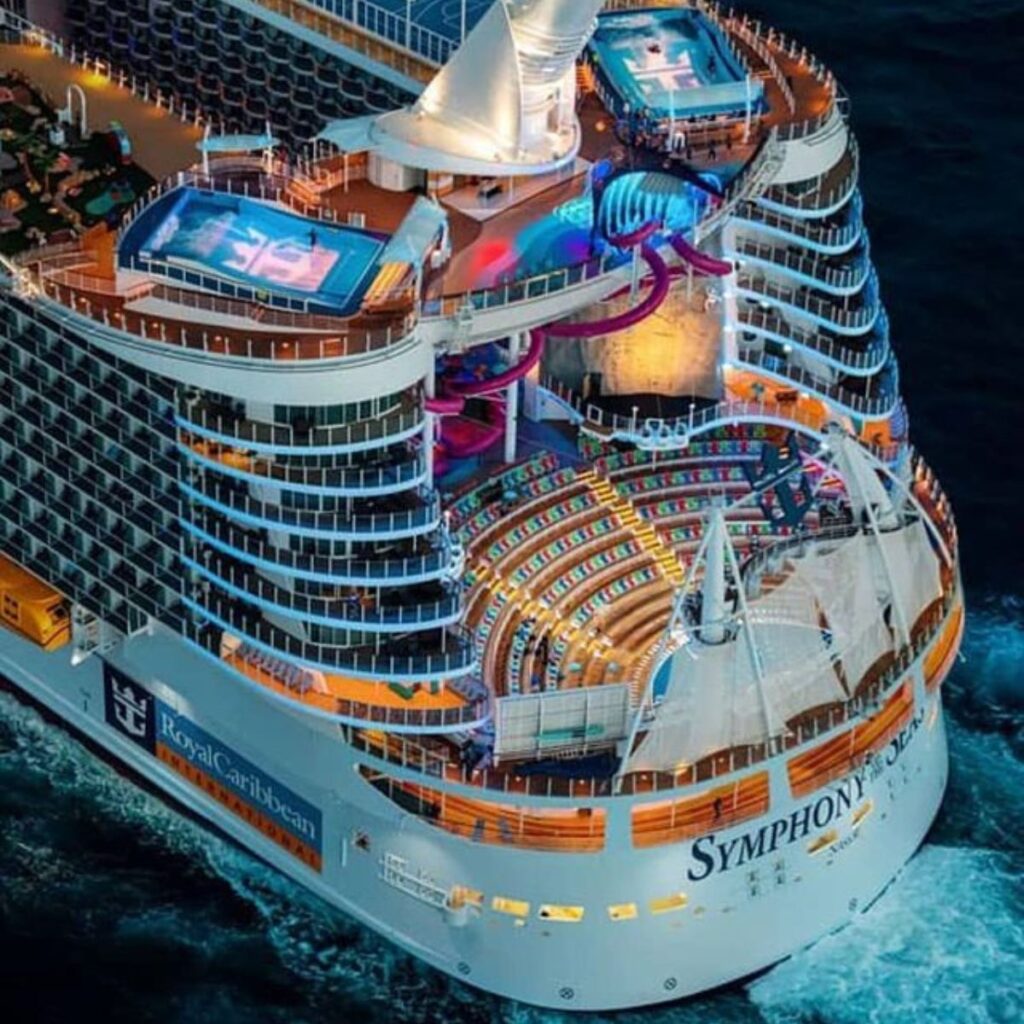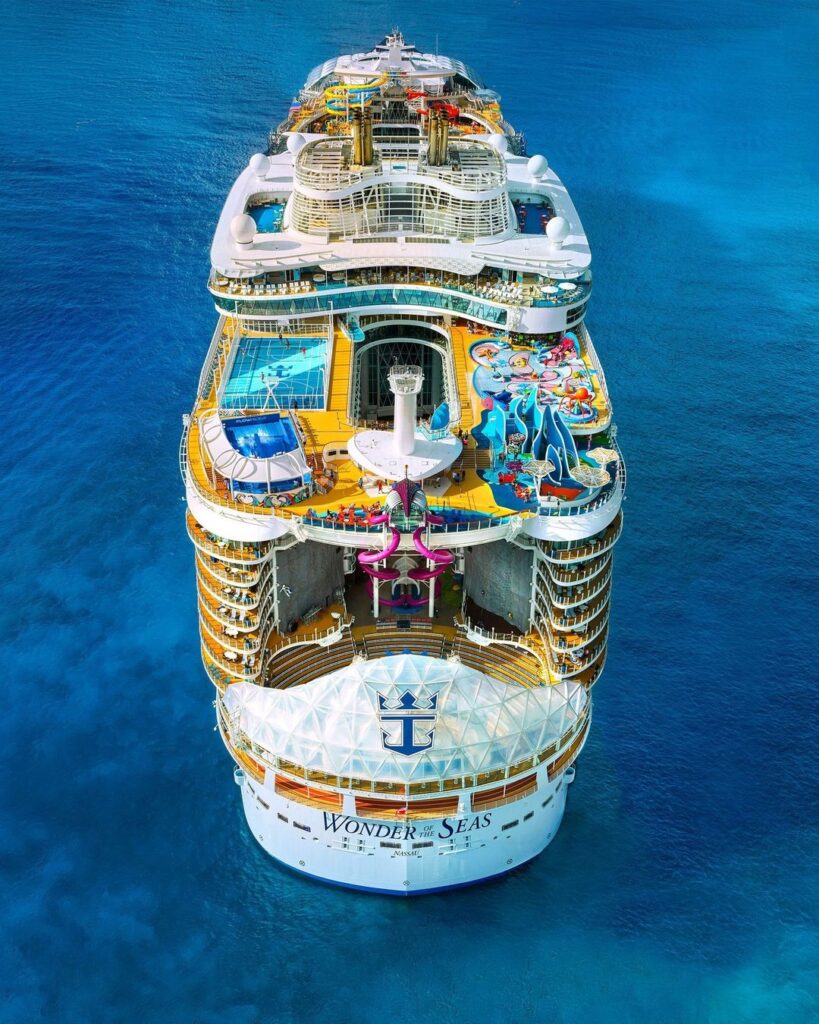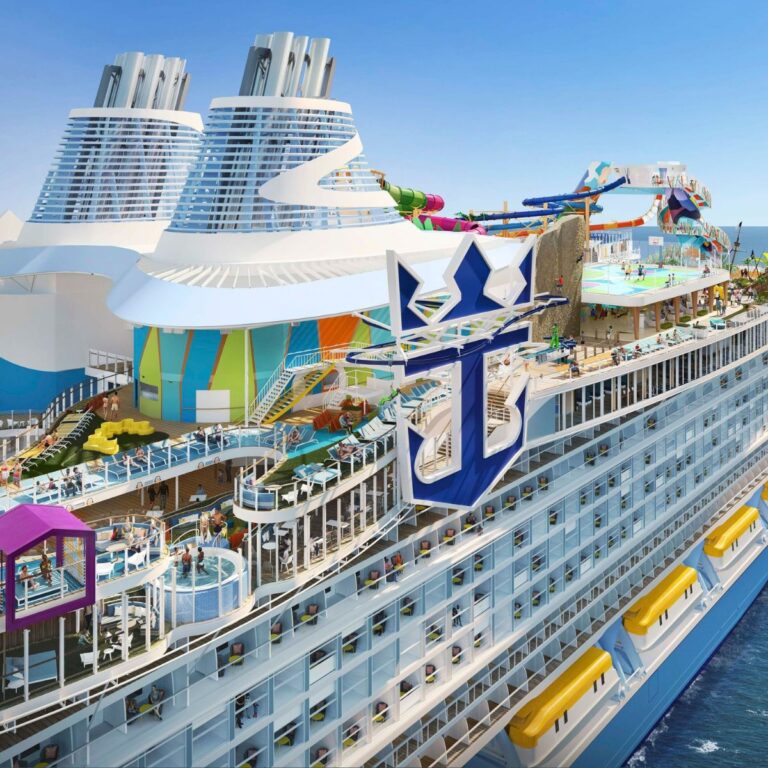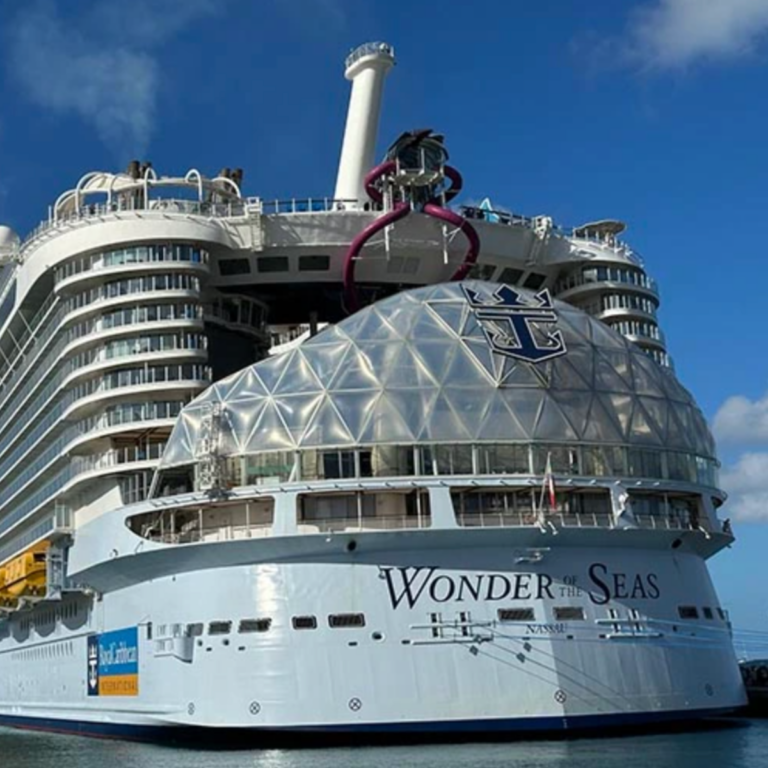Who Owns Royal Caribbean? (A Deep Dive)
Navigating the world of cruise line investments can be a bit perplexing, especially when it comes to Royal Caribbean.
As one of the largest, if not the largest, cruise lines globally, this company has a significant presence in the industry.
Also, it belongs to an incredibly valuable cruise corporation with a strikingly similar name. This might leave potential investors wondering which entity they are investing in – the cruise line or the corporation?
Fear not, as this article aims to clarify the intricacies surrounding Royal Caribbean’s business structure.
By the end of this guide, the differences between the cruise line and the corporation will be unravelled, making it easier for interested investors to make informed decisions.
Who Owns Royal Caribbean?

Who Holds the Most Royal Caribbean Shares?
Capital Research & Management, a prominent investment company, holds the most shares in the Royal Caribbean Group, owning over 16% of the company. Established in 1931, the group manages more than $2.6 trillion in assets across its entire portfolio.
Capital Research & Management Co. (International Investors) holds the majority of their stake in Royal Caribbean with an 11.66% ownership.
Other large shareholders include well-known investment firms like The Vanguard Group and JPMorgan.
Who is the CEO of Royal Caribbean?
Michael Bayley oversees Royal Caribbean International as their CEO and President, while Jason Liberty serves as President and CEO for the parent company, Royal Caribbean Group.
Hailing from the United Kingdom, Michael Bayley pursued his degree in Business at the University of Bournemouth.
What country does Royal Caribbean belong to?
Initially established by three Norwegian cruise lines, Royal Caribbean Cruise Line ultimately joined the New York Stock Exchange and created the Royal Caribbean Group, which is incorporated in Liberia.
By incorporating in Liberia, the group can avoid certain US taxes and wage and labor laws that would otherwise apply.
This strategy is common among cruise lines, which often register their ships in countries like the Bahamas.
Where is Royal Caribbean’s Headquarters Located?
The main office for Royal Caribbean resides in Miami, Florida. The exact address is 1050 Caribbean Way, Miami, FL 33132. To contact the Royal Caribbean headquarters, the phone number is +1 305-539-6000.
What Is the Net Worth of Royal Caribbean?
Royal Caribbean has an impressive $21.12 billion dollar net worth, as of October 2023, making it the largest cruise line company by market cap.
Carnival hold second place with $14.82 billion (Oct 2023.)
A Glimpse into Royal Caribbean’s History

The Founders of Royal Caribbean
In 1968, Royal Caribbean Cruise Line was established by three Norwegian shipping companies: Anders Wilhelmsen & Company, I.M. Skaugen & Company, and Gotaas Larsen.
By 1970, their first ship, Song of Norway, began its service. Over the next two decades, the company launched several more vessels, including the first ‘of the Seas’ ship in 1988 — Sovereign of the Seas, which was the largest cruise ship at the time. In the same year, Royal Caribbean merged with Admiral Cruises.
The cruise line experienced rapid growth after going public in 1993, launching two more Sovereign-class ships, and constructing its new headquarters in Miami.
Expanding Through Acquisitions and Rebranding
In 1997, Royal Caribbean broadened its reach further by acquiring Greek premium cruise line Celebrity Cruises.
To distinguish the two sub-brands, Royal Caribbean International became the cruise line’s name, the parent company was called Royal Caribbean Cruises Ltd., and later, the Royal Caribbean Group.
Currently, the group owns three cruise lines: Royal Caribbean International, Celebrity Cruises, and Silversea. Although Azamara was once a part of the group, it was sold in 2020. Additionally, 50% of TUI Cruises was sold in recent years.
The Groundbreaking Oasis Class
One of the most defining moments for Royal Caribbean came in 2009 when it launched the first Oasis-class ship.
At the time, it was the largest class of ship globally. Although it has since been surpassed by the Icon-class, Oasis Class vessels significantly contributed to Royal Caribbean’s popularity among cruisers.
Examples of Oasis-class ships include:
- Oasis of the Seas
- Allure of the Seas
- Harmony of the Seas
- Symphony of the Seas
These ships showcase impressive architectural feats and continue to excite cruise enthusiasts worldwide.
Royal Caribbean’s Environmental Initiatives

Sustainable Operations and Ship Design
Royal Caribbean cruises sets a high bar for environmental responsibility in the cruising industry, focusing intensely on reducing its carbon footprint and advancing eco-friendly ship design.
Innovations in fuel efficiency, such as using alternative energy sources, coupled with cutting-edge waste management systems, demonstrate their commitment to sustainable operations at sea.
Their ships are not just luxurious but also environmentally conscious, featuring energy-efficient technologies and sustainable materials.
By integrating AI and IoT, Royal Caribbean Group optimizes energy use, reducing emissions and showcasing their dedication to a greener future.
Eco-Friendly Excursions and Marine Conservation
Beyond their ships, Royal Caribbean cruises is a champion of sustainable tourism and marine conservation. They partner with local communities to promote eco-tourism, offering experiences that respect and protect natural habitats.
This initiative extends to educating passengers about responsible tourism practices. Their commitment to protecting marine life is evident in their involvement in preserving coral reefs and collaborating with conservation organizations, ensuring the vibrant health of ocean ecosystems.
These efforts highlight Royal Caribbean’s role not only as a provider of unforgettable cruising experiences but also as a guardian of the planet’s natural wonders.
Reducing Carbon Footprint and Waste Management
Royal Caribbean cruises actively pursues a reduction in its carbon footprint, incorporating fuel efficiency initiatives and exploring alternative energy sources.
By investing in carbon offset programs and implementing strategies for greenhouse gas reduction, they highlight their commitment to combating climate change.
Complementing these efforts, Royal Caribbean cruises also focuses on robust waste management and recycling practices.
Advanced waste treatment systems onboard their ships aim to minimize environmental impact, with specific programs for reducing and recycling waste, exemplified in their daily operations and illustrated through case studies from their fleet.
This dual approach underscores Royal Caribbean’s dedication to leading the cruise industry towards a more sustainable future, balancing ocean exploration with environmental responsibility.
Royal Caribbean International Financial Standing
Royal Caribbean Group boasts a net worth of $21.21 billion as of October 2023. This impressive figure positions the company ahead of its closest competitor, Carnival Group, by a margin of over $7 billion.
Exploring Royal Caribbean’s Stock Possibilities
While Royal Caribbean International itself does not hold stock, its parent company, Royal Caribbean Group, trades under the symbol RCL on the New York Stock Exchange. As one of the most valuable cruise line stocks available, it’s an attractive option for investors.
Purchasing 100 or more shares in the Royal Caribbean Group offers an enticing perk. Shareholders receive exclusive benefits when embarking on a Royal Caribbean International or Celebrity Cruises voyage (excluding trips to the Galapagos Islands).
Shareholder benefits include:
- $250 onboard credit for each stateroom on sailings lasting 14 nights or more
- $100 onboard credit for each stateroom on sailings of 6 to 13 nights
- $50 onboard credit for each stateroom on sailings spanning 5 nights or fewer
To claim your shareholder onboard credit, simply visit the cruise line’s website and present proof of share ownership.
By taking advantage of these benefits, you can enhance your cruising experience and make the most of your Royal Caribbean onboard credit.
Purchasing Royal Caribbean International Shares
To acquire Royal Caribbean shares, one must utilize a stockbroker. This can be a licensed individual or an online platform accessible via a laptop or smartphone. Ensure the chosen stockbroker handles transactions on the NYSE and allows for purchasing RCL stock.
Collaborating with a physical stockbroker can result in higher fees, but professional advice is provided, which may benefit those unfamiliar with investing. This option also allows for discussions about potential advantages or disadvantages concerning RCL stock.
For individuals who are certain about investing in RCL stock and aware of the associated risks, online stockbroker platforms may be a more cost-effective alternative.
While specific recommendations cannot be given, the writer shares their personal experience of purchasing Royal Caribbean International shares through an online platform called etoro.
They selected this platform due to its popularity, boasting 20 million registered users, positive reviews, and low fees. The overall experience of buying shares was reportedly seamless and enjoyable.
Royal Caribbean’s Strategic Growth and Expansion

Developing New Ships and Expanding Fleet
Royal Caribbean’s vision for the future centers on expanding and modernizing its fleet. This involves the introduction of new, state-of-the-art ships, each promising enhanced guest experiences, innovative amenities, and greater capacity.
This growth strategy not only aims to cater to a wider audience but also to reinforce Royal Caribbean’s position as a leader in the global cruise market.
Market Growth and Business Development
Alongside fleet expansion, Royal Caribbean is focusing on penetrating new markets and fortifying its presence in existing ones.
Strategic business development, including exploring untapped destinations and customizing experiences to cater to diverse customer preferences, forms the backbone of their market growth objectives.
These initiatives signal Royal Caribbean’s ambition to not just evolve with the changing tourism landscape but to actively shape it, ensuring their long-term success and sustainability in the competitive cruising industry





